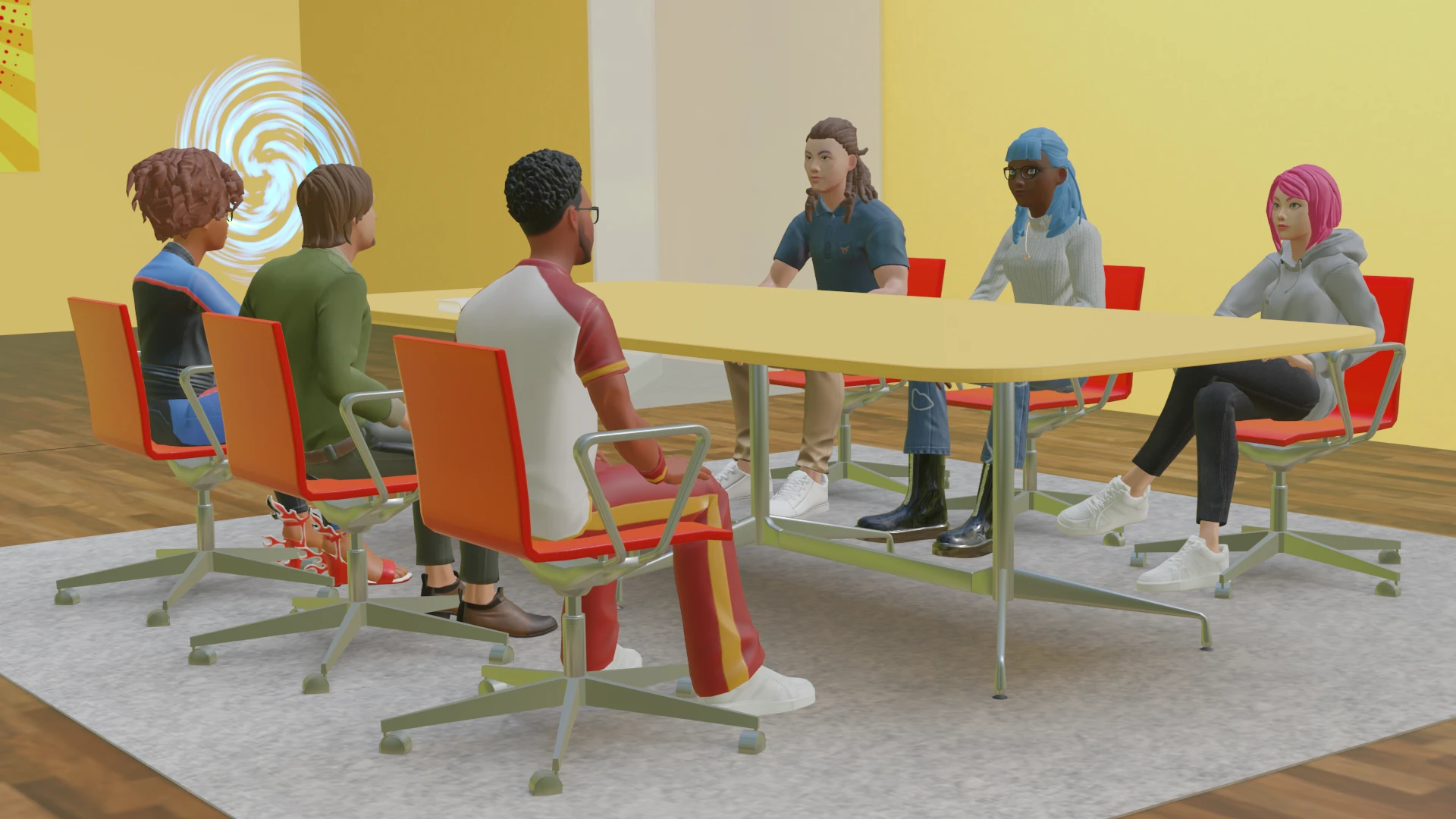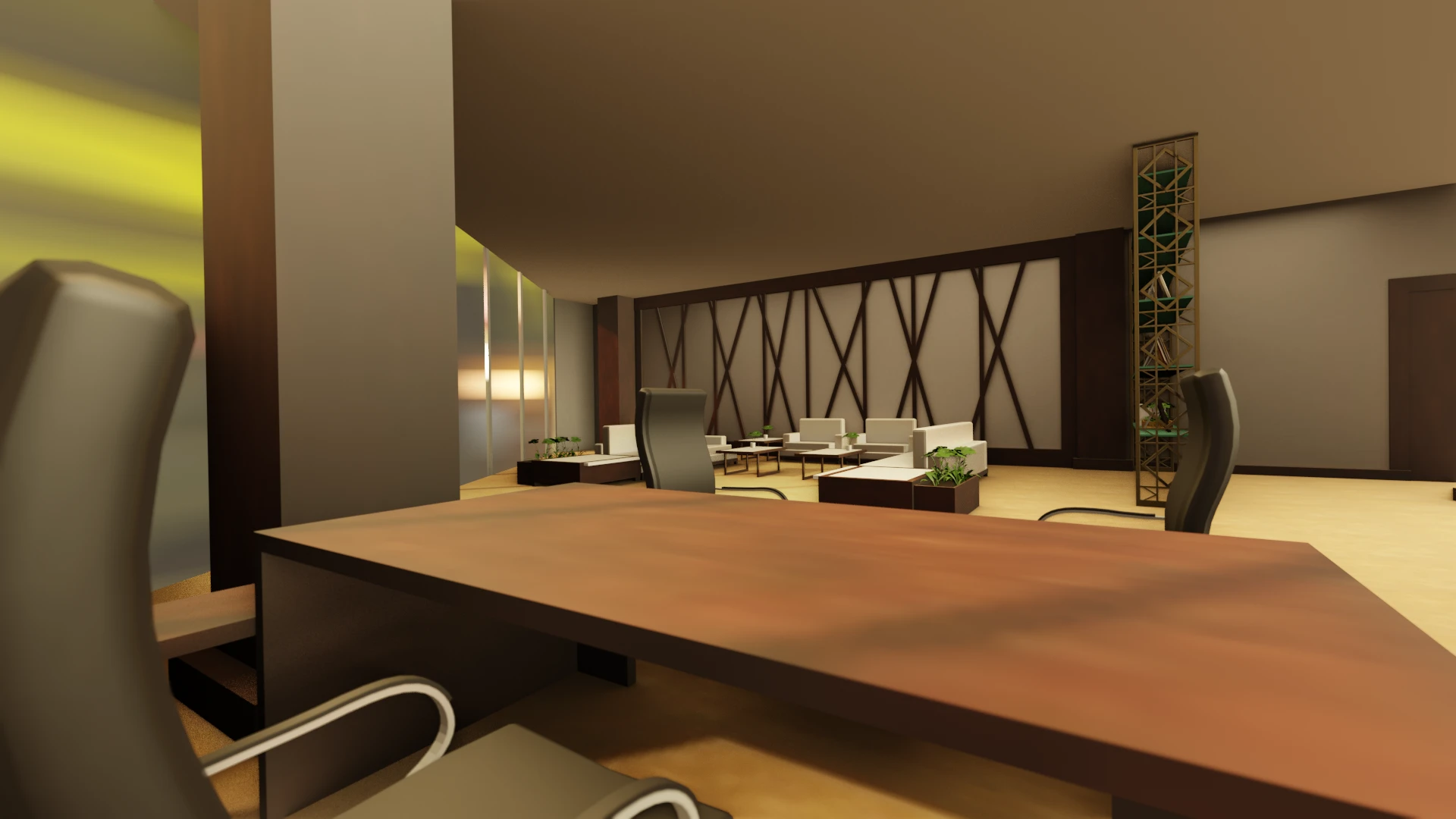Although virtual reality has been in development for some years, it wasn’t until recently that we started seeing holding meetings in the metaverse as a viable option. After all, this technology has the ability to make our shared experiences much more immersive and realistic. So, can you already do meetings in the metaverse? We will explain everything you need to know in this article.
What Are Meetings Like in the Metaverse?
For the last couple of years, hosting virtual meetings using platforms like Meet, Zoom, and Teams has become a daily occurrence. However, if you are familiar with this practice, you will know it doesn’t really feel as satisfying as having an in-person encounter. Everyone needs to take turns; if the cameras are on, everyone feels observed, an if they are off, there's usually someone having to troubleshoot some connection issue!
If you instead use virtual and mixed reality for your metaverse meetings, you can interact with others in real-time using an avatar. This means you don't have to continually expose your face and can also use your arms and hands to communicate. You can also change posture, move around, and in many cases also, manipulate digital objects around you.
Before we go into the fundamentals for holding meetings in the metaverse, let’s quickly explore some of the main advantages and disadvantages of meeting your team members in a virtual world.

Metaverse Meetings: The Pros
There are many benefits to having virtual meetings in the metaverse. For one, unlike videoconferences, you have the ability to visualize and solve problems in 3D, and you don't need to worry about your camera being on all the time. But there is more:
Fewer Distractions
Virtual experiences in a metaverse can be pretty immersive and, in some cases, make you feel disconnected from the real world. One advantage is that, as such, they can also remove some of the distractions we are used to dealing with when having calls and video chats.
Better Collaboration
When you hold your meetings in the metaverse, you typically have access to a variety of tools and abilities you wouldn't otherwise have. For example, you can use your avatar's hands, movement, and in some cases, even facial expressions to communicate with others much more easily. This leads, in turn, to better collaboration between coworkers and a fun experience for everyone involved.
Interactivity
The metaverse often supports workstations that are also fully interactive. It's also quite common for virtual offices to have dynamic elements you can use, such as screens, boards, internet browsers, music players, and much more. In many cases, engagement in the metaverse feels like a video game - which can in turn, improve productivity and just help team members have a better time when working together.
Accessibility
Metaverse meetings allow people to work together no matter where they are or whether they have physical constraints. Time zones also become irrelevant, but more importantly: If a team member has mobility issues, they should not have a problem joining a meeting in a virtual world. In short, these platforms allow for more inclusion and accessibility.
Metaverse Meetings: The Cons
There are also some downsides to moving your meetings to the metaverse. The three main ones are security, the cost of equipment, and the chance of getting fatigued. Let's take a look at them, too:
Security
At the beginning of the pandemic, virtual conferencing tools like Zoom underwent major scrutiny as the news reported many cases of classrooms being targeted by hackers. You can expect metaverse meetings to remain confidential, so it's paramount that the platforms that allow it take all the measures necessary to keep its users safe.
Access Cost
If you want a genuinely immersive metaverse meeting experience, it's always a good idea to use accessories like VR headsets, which allow you to translate physical movement into avatar expressions. However, VR goggles are not cheap. Keep in mind these costs when planning meetings in a virtual world, and remember that if you don't use these devices, some of the body language used might get lost.
Fatigue
During the pandemic, many people developed what is now known as "Zoom fatigue,"; a problem with cognitive overload due to the constant presence of a person's own image. Although metaverse meetings use avatars and not cameras to interact, this fatigue is unlikely to happen. However, eye strain can be an issue for people using VR goggles for too long, so it's always a good idea to limit your metaverse meetings so that nobody's health is put at risk.
Image alt: A metavese office in the platform Cerebrum Progressus (formerly PandaMR) (souce: Screenshot)
How Can Companies Host Meetings in the Metaverse?
If you are considering hosting a metaverse meeting, there are a few options out there that can make the process much easier. Basically, you can build your own virtual world, use a pre-built office in an existing one, or build your own custom office in an established metaverse.
Each of these options has its pros and cons, too. For example, if you want to create everything from scratch, you will need a dedicated server to host all services, developers, and an IT team to deal with any support issues. Unless you have these resources, the best option is to use a pre-built or customizable office in a platform that can allow you to carry your meetings worry-free.
What Does a Metaverse Meeting Look Like?
The goal of hosting a meeting in the metaverse is, as we covered when we explained its benefits, to create a more immersive experience; one where all team members can collaborate as if present in a physical office.
Think of Zoom conferences and how difficult it is to remain engaged when there are many coworkers present. If you host a meeting in the metaverse, the situation is quite different. For a start, you can see who is looking at who then they are talking. Or who is looking at the TV or screen in the room. You can also read head and hand movements and, with some advanced VR headsets, some facial expressions.
Video conferencing has been proven mentally fatiguing because attendees feel they are constantly on show. You can see yourself mirrored on your screen many hours a day. However, if you hold virtual meetings in the metaverse, you have your avatar to represent you - which results in the whole experience being much less stressful.

Steps to Move Your Meetings to the Metaverse
The first thing you need to do if you want to host meetings in the metaverse is to choose which platform you will want to use. A popular option is Decentraland, a virtual browser-based world. However, in order to use this metaverse, you will need to set up a virtual wallet, buy some crypto, buy a plot of land, and build your office on it.
A better alternative is Cerebrum Progressus (formerly PandaMR), which uses community-built metaspaces where you can easily host meetings for free, and without the need to purchase any coins or go through lengthy registration processes.
Cerebrum Progressus (formerly PandaMR) Avatars
If you want to try Cerebrum Progressus (formerly PandaMR) for your metaverse meetings, the first step is to create an avatar for your user. The platform features a unique avatar creation tool with an extensive range of features you can customize to promote immersion. All avatars include live-like animations and emotions.
Cerebrum Progressus (formerly PandaMR) Personal Spaces
All users that register with Cerebrum Progressus (formerly PandaMR) (the process is really straightforward and just takes a couple of minutes) are given a personal space they can use for free as part of the platform's metaverse. You can use this space to host your meetings or use one of the pre-built offices created by the company and other Cerebrum Progressus (formerly PandaMR) users.
Cerebrum Progressus (formerly PandaMR) Virtual Reality
At the time of writing this article, Cerebrum Progressus (formerly PandaMR) is still developing its virtual reality support. You can expect to use the technology in your metaverse meetings in the coming months! Join the Discord server to get notified when VR does become available!
Conclusion
More companies are beginning to host meetings in the metaverse. Again, the benefits are proven; virtual worlds can help us have more immersive, collaborative experiences and express ourselves better through the use of avatars.
Metaverse meetings and conferences offer a unique chance to not just interact with other team members but also work together on virtual workstations and using 3D objects. Plus, you can bring a myriad of assets to your meetings, such as videos, sound, product renders, and more.
If you’re looking for a free, easy-to-use metaverse platform to host online meetings, Cerebrum Progressus (formerly PandaMR) allows you to create your own customizable spaces o choose from a range of beautiful pre-built offices. For example, you can create virtual career fairs to find new talent or hold a virtual conference or virtual expo so you can deliver a unique experience to anyone interested in your business. The options are practically endless. So, what are you waiting for? Try Cerebrum Progressus (formerly PandaMR) today!

